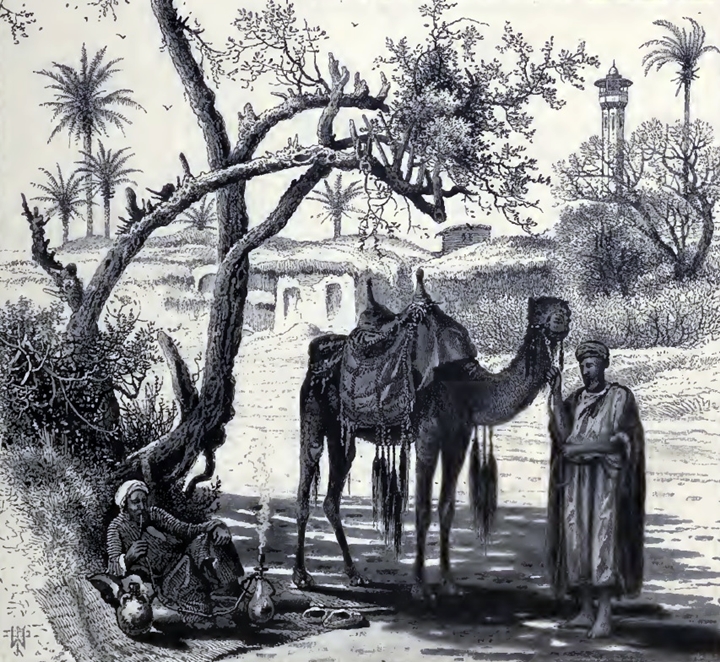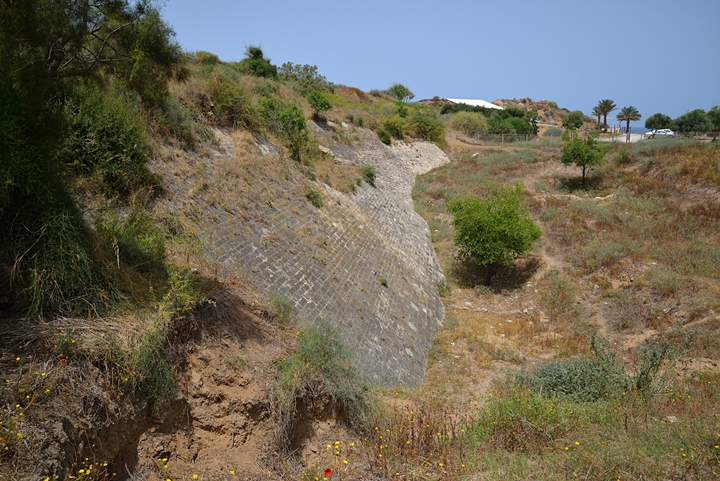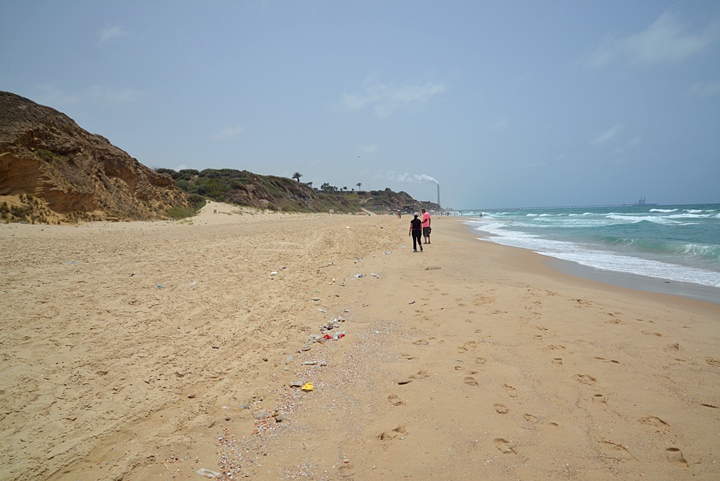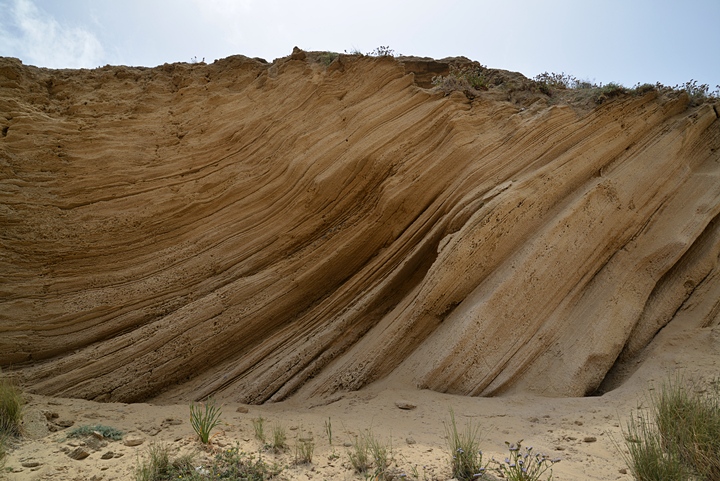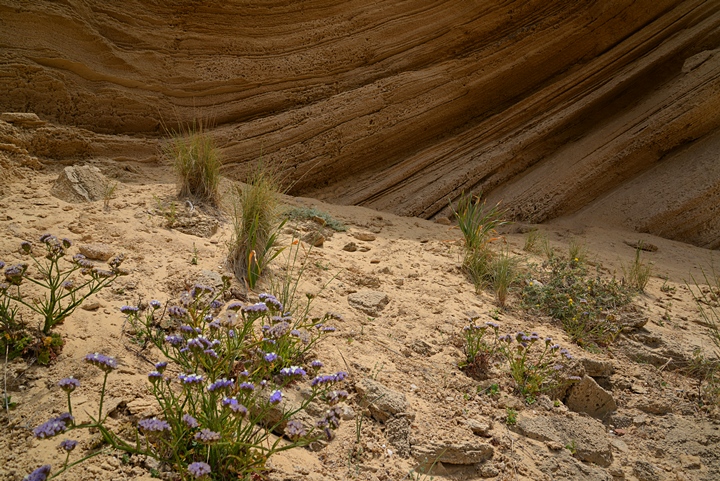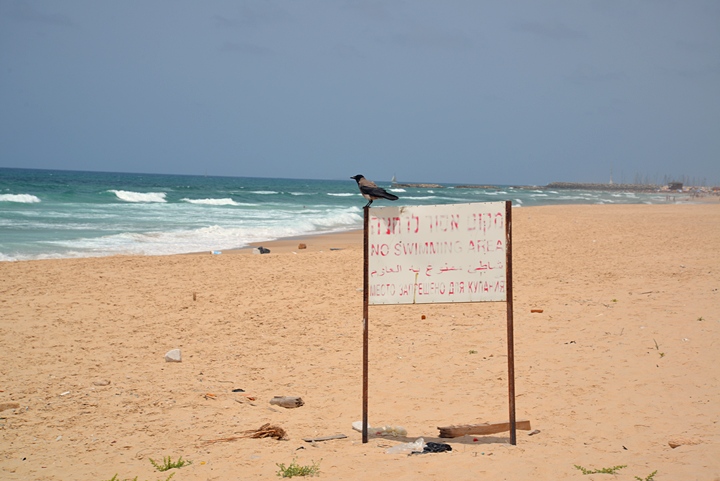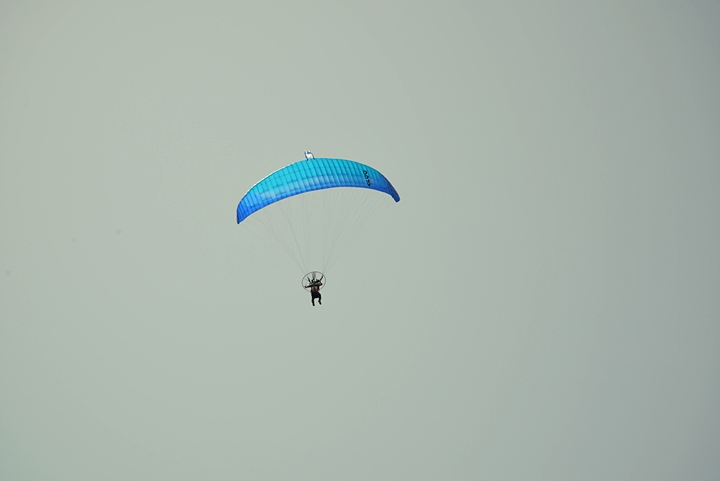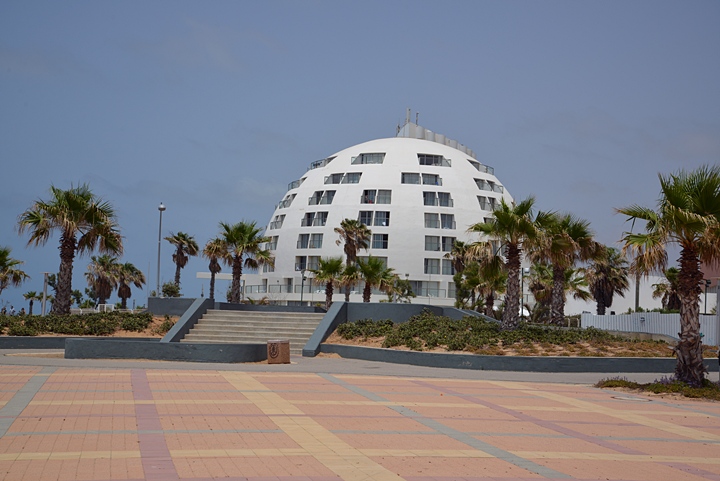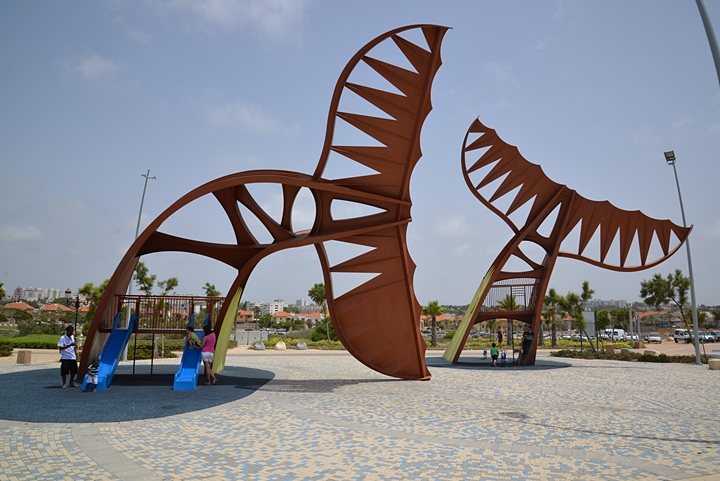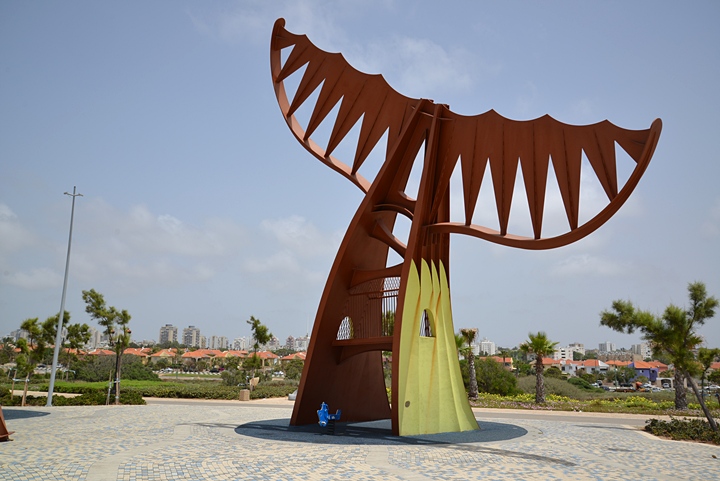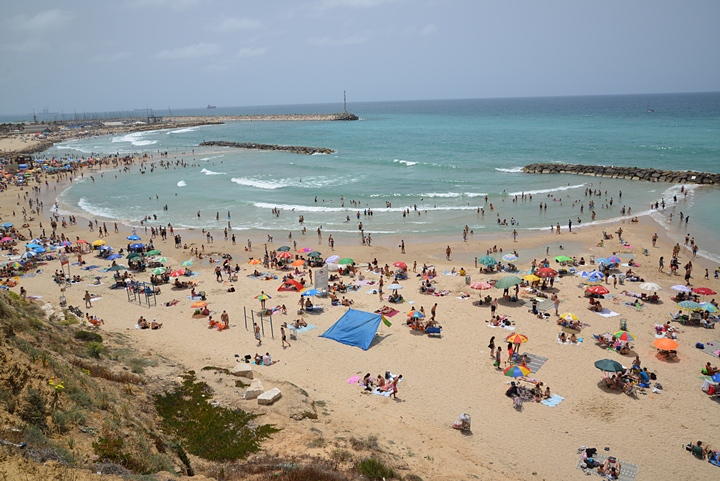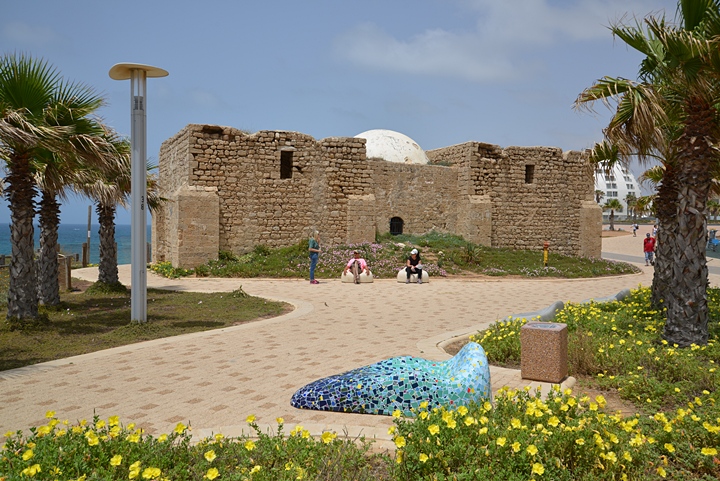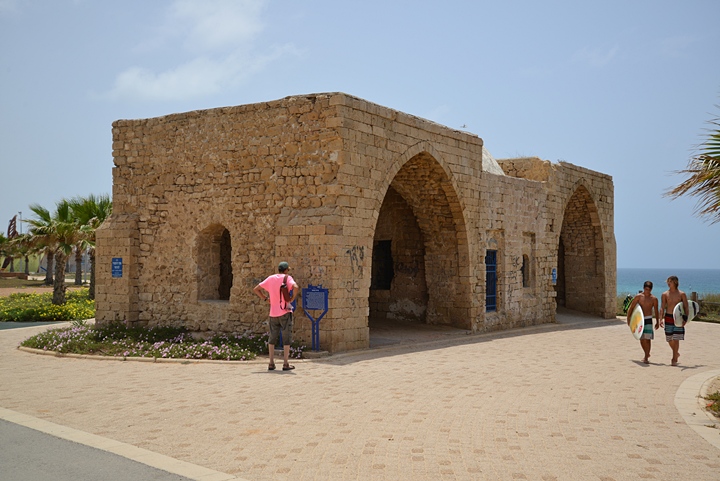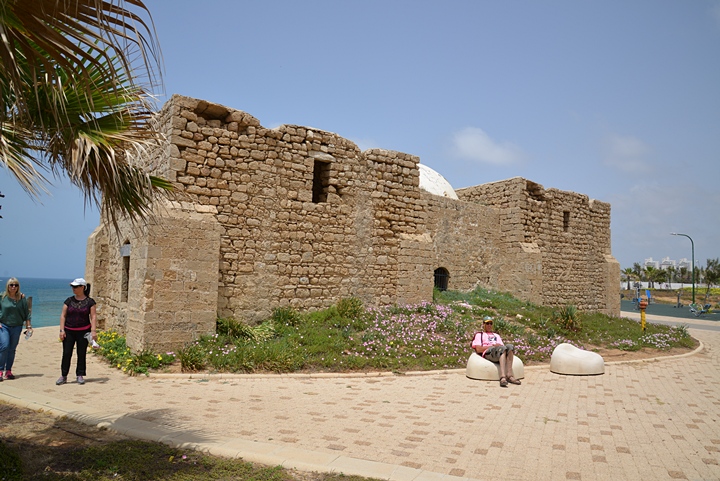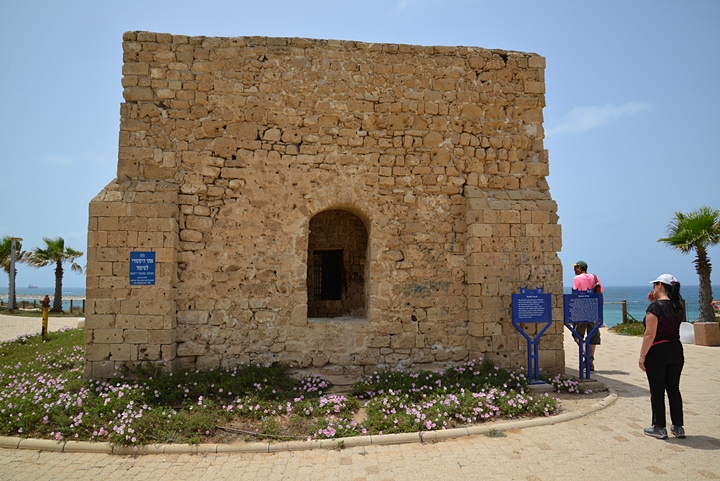This overview page describes the sites in the vicinity of the city of Ashkelon.
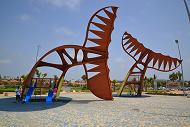
Home > Sites > Shefela > Ashkelon City (Overview)
Contents:
Background
Location
History
Photos
* National Park
* Park Beach
* Boardwalk
* City Beach
* Sheikh Awad
Etymology
Links
Overview:
This overview page describes the sites within and in the vicinity of the modern city of Ashkelon.
Ashkelon is an ancient city located on the Mediterranean coast of Israel, south of Tel Aviv. It is one of the oldest continuously inhabited cities in the world, with a history that dates back over 4,000 years.
The city has been conquered and occupied by many different civilizations throughout its long history, including the Canaanites, Philistines, Israelites, Babylonians, Persians, Greeks, Romans, Byzantines, Muslims, Crusaders, Mamluks, Ottomans, and British.
Some of the most notable historical events and landmarks in Ashkelon include:
- The Siege of Ashkelon – in 1280 AD, the city was besieged by the Mamluk Sultanate and eventually fell after a long and bloody battle.
- The Ashkelon National Park – this site contains the ruins of the ancient city, including the impressive Roman amphitheater, Crusader fortifications, and the remains of a Philistine city.
- The Ashkelon Sea Wall – a massive fortification built by the Canaanites around 2000 BC to protect the city from invaders.
- The Ashkelon Museum – this museum contains a collection of artifacts and exhibits from different periods of the city’s history, including ancient pottery, jewelry, and weapons.
- The Ashkelon Marina – a modern marina that offers boating, fishing, and other recreational activities, and is situated near the ancient harbor of the city.
Today, it is a modern city with a population of around 150,000 people, and it is home to several significant ancient sites that are open to visitors.
A separate page focuses on the National park of Ashkelon, where the ruins of the ancient city are located.
Location and Map:
Ashkelon is situated on Israel’s southern coast. Its major historic site is located in the National park of Tel Ashkelon, southwest of the modern city.
Note that there are other ancient and historic sites in the city, which will be added to this page in the future.
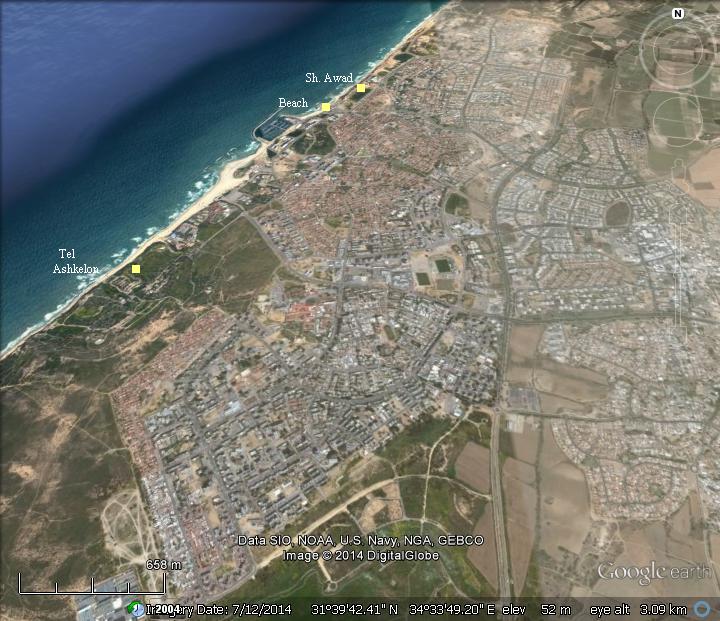
History:
- Ancient Ashkelon
For a review of the ancient periods, see the Tel Ashkelon page.
- Ottoman period
Old Ashkelon was an Arab village named el-Mejdal (‘the tower’).
An illustration of the village, dated 1882, was published in a book by CH. W. Wilson , one of the PEF explorers. The title: “El Mejdal – the ancient Migdol”. The subtitle: “An important village of fifteen hundred inhabitants. Its mosque and tall minaret are constructed of ancient materials. A weekly fair is held here.”.
Ch. W. Wilson, Picturesque Palestine, 1882, Vol III P. 168
The village of el-Mejdal was demolished, except for its mosques and Khan. The mosques are located on the east side of the modern city. Ashkelon’s Khan history museum, including findings from Tel Ashkelon excavations, is housed inside the great mosque of el-Mejdal.
- Modern period
The modern city of Ashkelon was established in 1949, after the Independence of Israel. Its center is located to the north of ancient Ashkelon. Today (2014) it has 128,000 residents and the large city covers an area of 55,000 dunams (5,500 Hectares).
Photos:
(a) Tel Ashkelon:
South of the modern city is the large National park, with ruins of the ancient city. Ancient Ashkelon encompasses a history of 4,000 years, a port city located on the main trade route from Egypt to the North. It started as a huge fortified Canaanite city, continued as a Philistine city, turning into a thriving commercial center and independent city during the Hellenistic and Roman periods, then ending as a Crusader border fortress.
This photo is of the Medieval fortifications, which were constructed above the ancient Canaanite ramparts. In the background is the location of the Canaanite gate, which is dated to 1850 BC – the oldest known in the world.
![]() Read more about the ancient city of Ashkelon.
Read more about the ancient city of Ashkelon.
Click on the photos to view in higher resolution…
(b) Shore west of Tel Ashkelon:
To the west of Tel Ashkelon is a nice stretch of beach. The sand and the sea covers the remains of Ashkelon’s harbour and some of the structures that were once built on the edge of the city. But if you are already visiting the ancient site, why not enjoy the view?…
Along the cliff of the sandstone (Kurkar) ridge are some interesting spots, like this section near the northwest corner of Tel Ashkelon. The “veins” of the rock create a natural sculpture.
Wild flowers add some colors… This “Ad-Ad Kachol” flower (Cut-Leaf Sea-Lavender) is common along the shores of Israel, and it blossoms from March to June.
In the next photo, the sign warns against swimming in this section, but the bird finds it a convenient landing place.
Birds are not the only flyers… here a power hang glider flies over the beach.
(c) Modern Ashkelon boardwalk:
North of Tel Ashkelon, and north of the Ashkelon marina, is the new Bar-Kochba promenade. It is situated along the cliff overlooking the beach, west of the Bar-Kochba avenue.
This modern boardwalk includes giant environmental sculptures of whale tales, which embed children playground equipment.
The tails of the whales are 9 meters high and 11 meters wide. They were designed by Aarle Ben Areieh, an Israeli artist whose motto is “Day to Earth Dreamer”. His sculptures: “… environmental pieces are always related to the human space and environment”.
(d) Modern Ashkelon – Beach:
The boardwalk overlooks the Bar-Kochba public beach, which is north of the Marina. In this photo the Marina is seen on the far left side.
A panoramic view, as seen from the boardwalk, is shown in the following picture. If you press on it, a panoramic viewer will pop up. Using this flash-based panoramic viewer, you can move around and zoom in and out, and view the site in full screen mode. Hot spots indicate the major points of interest.
To open the viewer, simply click on the photo below. It opens a new window, and will run after a minute or so.
(e) Sheikh Awad:
Along the boardwalk is a ancient structure dated to the Mameluke period – a sheikh’s tomb called “Sheikh Awad”.
The identification of the Holy person buried here is unknown. Until 1948 the Muslims came to pray here on Fridays.
The Mamelukes attempted to strengthen the coastal western frontier by establishing such structures. Another similar shrine is located in the National park.
A view from the eastern side:
Etymology (behind the name):
Names of Ashkelon:
- Ashkelon (Ashqelon, Askelon) – perhaps the name is based on the unit of weight – Shekel – as the city was a major maritime stronghold
- Ascalon – Greek name.
Links and References:
* External links:
-
Municipality of Ashkelon
-
National Park
* Internal links:
- Tel Ashkelon – review of the ancient site of Ashkelon
BibleWalks.com – tour the Land
Tel Ashkelon <—previous site—<<<All Sites>>>— Next Shefela site —>>> Ashdod Yam
This page was last updated on Mar 14, 2023 (update overview)
Sponsored links:
